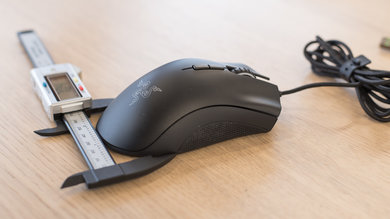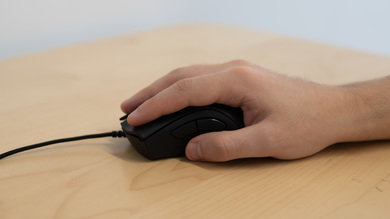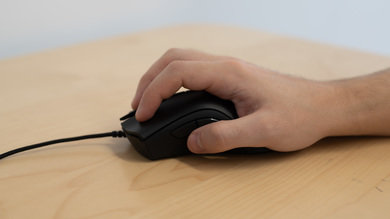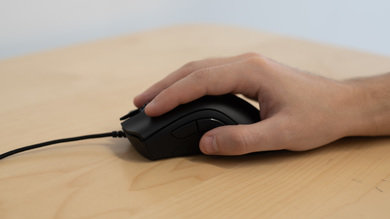Choosing a mouse can be a very complex task for some, but in the end, it all comes down to preference. Some people will prefer a mouse with an ambidextrous design and some will prefer a mouse with a slanted design for a more comfortable grip. Some will like ultra-light mice while someone else can prefer having something with some heft to its design that feels a bit on the heavier side.
A mouse with a great design will be suitable for most hand sizes and different grips, although some are designed for a specific grip. A mouse with a taller back will more than likely be better for a palm grip, as it offers more surface for your palm to rest, providing a comfortable feel. On the other hand, something with a short and flatter design will probably be used for the fingertip grip.
There are no better or worst grips, it all depends on how you prefer holding your mouse and what shape, size, or weight you prefer. Each grip has its advantages, but if holding your mouse in an undesired grip provides pain, then it shouldn't be used as it can result in wrist injuries like carpal tunnel. No mouse is really universal for every grip and hand size, and there isn't a perfect mouse that suits everybody's needs.
Test results
Our Tests
Testing comfort for mice is quite hard since it's such a subjective preference. We begin by looking at the shape of the mouse and evaluate what the mouse is designed for. If a mouse has a high back and sloping curves to the right, with a thumb-rest, we expect it to be better suited for a palm grip, and so on for claw and fingertip grips and their specific design characteristics. We do the same thing depending on the size of the mouse and what hand sizes we expect to fit with this mouse.
Afterward, we have a selected pool of employees with different hand sizes that we ask to grab the mouse. The hand's size is measured from the top of the middle finger to the wrist line.
| Hand size category | Hand size range |
| Small | 14 cm to 17.5 cm (5.5 in to 6.9 in) |
| Medium | 17 cm to 19.5 cm ( 6.7 in to 7.7 in) |
| Large | 19 cm to 20.5 cm (7.5 in to 8.1 in) |
| Extra Large | 20 cm to 24 cm ( 7.9 in to 9.5 in) |
Comfort Of Use
When testing comfort of use, we check if the general feel of the grip seems comfortable, how the buttons are placed, and if they're easy to reach or not. Comfortable curved designs are scored higher, but if buttons are hard to use or if the mouse doesn't feature additional grips, the score is penalized. Since most people are used to their preferred grip, we don't ask the personal opinion of the test subjects on the different grips for their hand sizes. The tester looks at the overall grip of the test subject and notes if his expectations based on the mouse's shape and size are confirmed.
Although a medium-hand test subject might like using a tall-back MMO mouse with a fingertip grip, we ask ourselves if it's still recommended for that type of grip. It's not because one test subject likes it that most people will. When uncertain, different testers' opinions are asked. If there's ever a debate on whether a hand size is good or not regarding a certain grip, then we consider it not good for this grip.
Grip Width
 Grip Width Test
Grip Width TestGrip width differs from the actual width of the product. We use the standard width to calculate the volume of the mouse, which is the largest part of its body. However, some mice's grip width isn't the same as the largest horizontal distance. The grip width is more related to the distance between where you apply pressure on both sides of the mouse when holding it. Since not everybody holds their mouse the same way, we measure the grip width at three different positions and report the average of those measurements.
A wider grip width usually indicates a bigger mouse, which should be better suited most of the time for either a palm or a claw grip. Narrow, small, and low-profile mice are usually better with a fingertip grip. The average grip width of our initial mice test units is around 64mm.
Palm Grip
 Palm Grip
Palm GripThe palm grip is the most popular one due to its comfort. Your whole palm sits on the back of the mouse, wrapping the mouse comfortably. There are a lot of points of contact with the mouse, which gives you a more relaxed grip. It's often used with mice that have a high-back body and a longer shape. It's great for wide, slow, and precise gliding.
Although it's the most relaxed grip, it does have some downsides. The palm grip isn't ideal for fast movements like flick shots and your arm and elbow might be needed, especially for vertical movement. The accuracy and precision of the movements are slightly worse than the other grips.
Claw Grip
 Claw Grip
Claw GripThe claw grip is fairly similar to the palm grip, but with the two fingers curled up, giving a claw look to your hand. The hand is arched up and there's a bit less contact between your palm and the mouse's body. Also, instead of using your whole finger to click, you only need a more linear press from the tip of your fingers, as they are more perpendicular to the mouse.
This grip is better suited for faster gliding movements than the palm grip and offers better precision. Mice that have a claw grip design usually are quite similar to palm grip ones but can have a lower-back design.
Fingertip Grip
 Fingertip Grip
Fingertip GripThe fingertip grip is the one where, like its name suggests, mainly your fingertips are holding the mouse. This allows for minimal contact between your hand and the mouse, resulting in great control with fast movements like flick shots as the strain of your wrist, elbow, and shoulder is near none.
Mice that usually benefit from a fingertip grip are usually shorter and low-profile. They are usually quite lightweight as well. Unfortunately, this grip isn't as good as the palm grip for slow and precise movement.
How to get the best results
When it comes to choosing a mouse, it mostly depends on personal preference and the type of games you play. A mouse that feels comfortable for you for an MMO game might not feel great for playing an FPS that requires very fast reaction time and accuracy. The first thing to check out is your hand size, which you can easily measure from the top of your middle finger to about the wrist line.
Enthusiasts might even have more than a single mouse; one for each type of game they play. Since no mouse is perfect for everyone, it's normal to want different products for different needs. The best way to know is to try a few mice for yourselves and see what type of grip you usually use. Also, examine the shape of the mice that you like. Do they have a symmetrical design or is there a right slant in their shape? Do you prefer a thumb-rest or even a pinky rest? There are a lot of different mice available in today's market and there's surely one that will suit your needs.
| Hand size category | Hand size range |
| Small | 14 cm to 17.5 cm (5.5 in to 6.9 in) |
| Medium | 17 cm to 19.5 cm ( 6.7 in to 7.7 in) |
| Large | 19 cm to 20.5 cm (7.5 in to 8.1 in) |
| Extra Large | 20 cm to 24 cm ( 7.9 in to 9.5 in) |
Conclusion
Overall, the comfort of a mouse will mostly depend on what you personally prefer and what you're used to. However, you can guess a mouse's expected grip just by its shape and size. A dedicated MMO mouse usually has many side buttons, which require a higher body, which will be geared towards a palm grip. A small ultra-light gaming mouse will be geared for a fast-movement fingertip grip. On the other hand, office-oriented mice can have more nontraditional shapes and curves, putting your wrist in a neutral position, helping with wrist strain. There are plenty of options out there and keep in mind that no mouse is perfect.

















